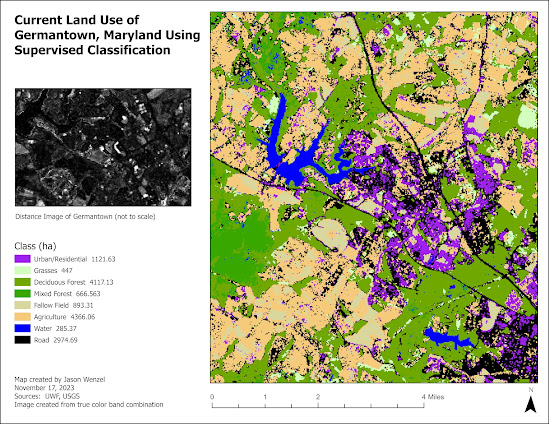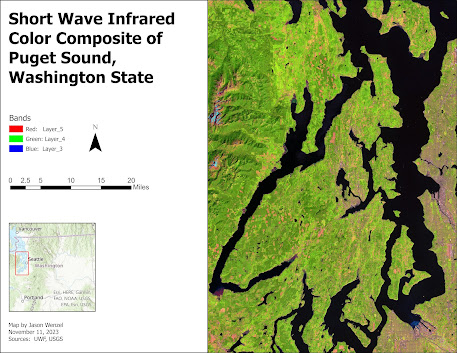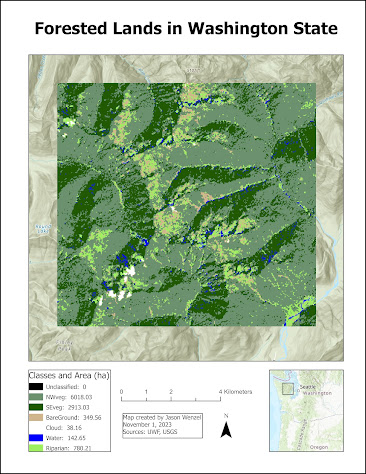Unsupervised and Supervised Image Classification

This week in GIS we covered unsupervised and supervised image classification where we conducted digital image processing in ERDAS Imagine software to collect and evaluate spectral signatures from satellite imagery. For the first part of the assignment, I conducted an unsupervised classification of surface types from a high resolution aerial photograph of the UWF campus in order to determine the amount of coverage of permeable vs. nonpermeable areas. For the the second part of the assignment, I conducted a supervised classification of land use of Germantown, Maryland based on a true color satellite image: Overall, I enjoyed completing this week's assignments and found the skills and techniques I learned helpful in expanding my proficiency in GIS.

